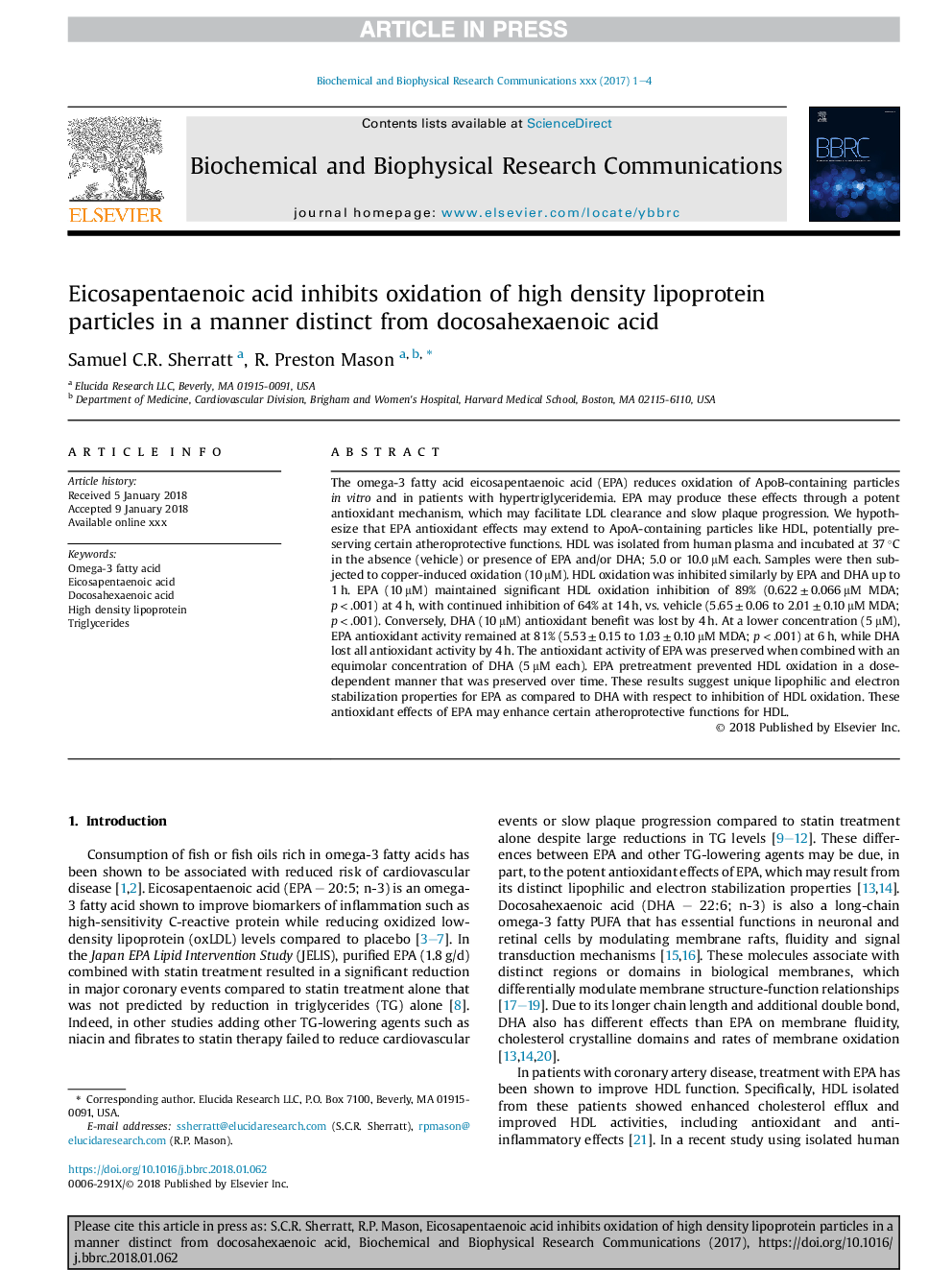| Article ID | Journal | Published Year | Pages | File Type |
|---|---|---|---|---|
| 8294685 | Biochemical and Biophysical Research Communications | 2018 | 4 Pages |
Abstract
The omega-3 fatty acid eicosapentaenoic acid (EPA) reduces oxidation of ApoB-containing particles in vitro and in patients with hypertriglyceridemia. EPA may produce these effects through a potent antioxidant mechanism, which may facilitate LDL clearance and slow plaque progression. We hypothesize that EPA antioxidant effects may extend to ApoA-containing particles like HDL, potentially preserving certain atheroprotective functions. HDL was isolated from human plasma and incubated at 37â¯Â°C in the absence (vehicle) or presence of EPA and/or DHA; 5.0 or 10.0â¯Î¼M each. Samples were then subjected to copper-induced oxidation (10â¯Î¼M). HDL oxidation was inhibited similarly by EPA and DHA up to 1â¯h. EPA (10â¯Î¼M) maintained significant HDL oxidation inhibition of 89% (0.622â¯Â±â¯0.066â¯Î¼M MDA; pâ¯<â¯.001) at 4â¯h, with continued inhibition of 64% at 14â¯h, vs. vehicle (5.65â¯Â±â¯0.06 to 2.01â¯Â±â¯0.10â¯Î¼M MDA; pâ¯<â¯.001). Conversely, DHA (10â¯Î¼M) antioxidant benefit was lost by 4â¯h. At a lower concentration (5â¯Î¼M), EPA antioxidant activity remained at 81% (5.53â¯Â±â¯0.15 to 1.03â¯Â±â¯0.10â¯Î¼M MDA; pâ¯<â¯.001) at 6â¯h, while DHA lost all antioxidant activity by 4â¯h. The antioxidant activity of EPA was preserved when combined with an equimolar concentration of DHA (5â¯Î¼M each). EPA pretreatment prevented HDL oxidation in a dose-dependent manner that was preserved over time. These results suggest unique lipophilic and electron stabilization properties for EPA as compared to DHA with respect to inhibition of HDL oxidation. These antioxidant effects of EPA may enhance certain atheroprotective functions for HDL.
Keywords
Related Topics
Life Sciences
Biochemistry, Genetics and Molecular Biology
Biochemistry
Authors
Samuel C.R. Sherratt, R. Preston Mason,
